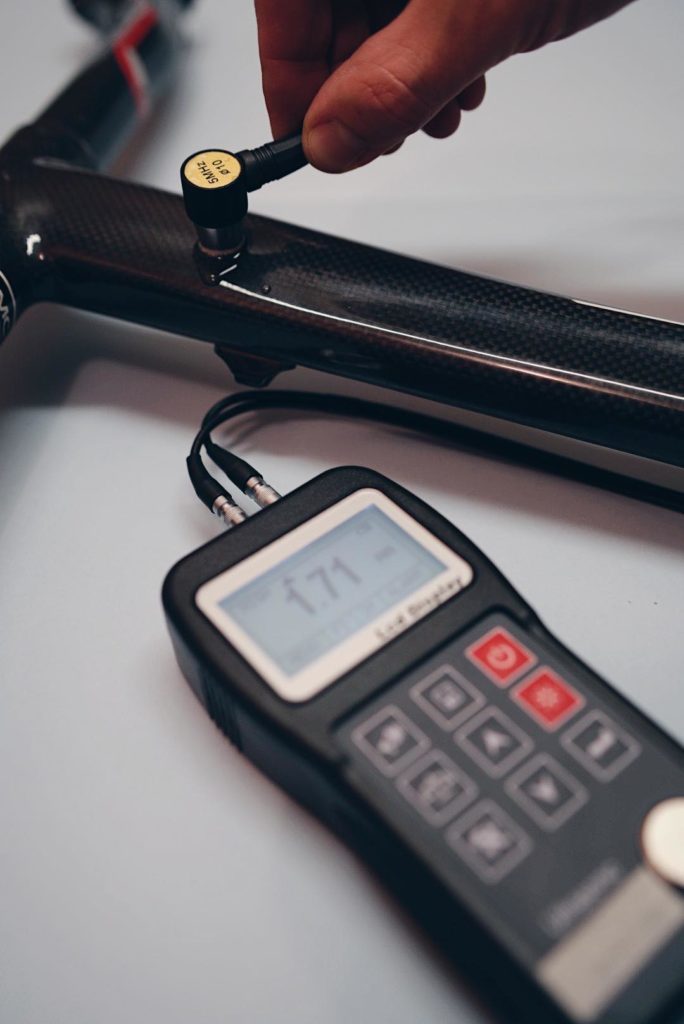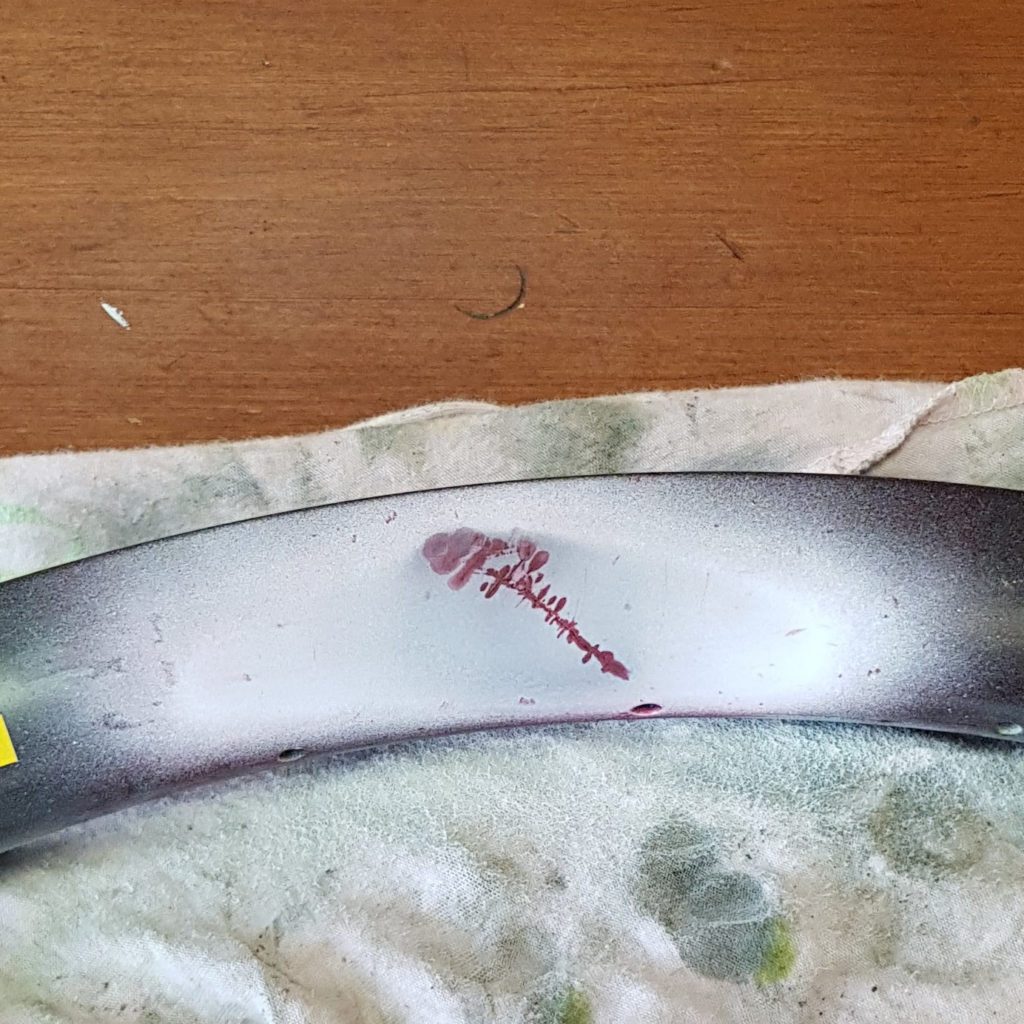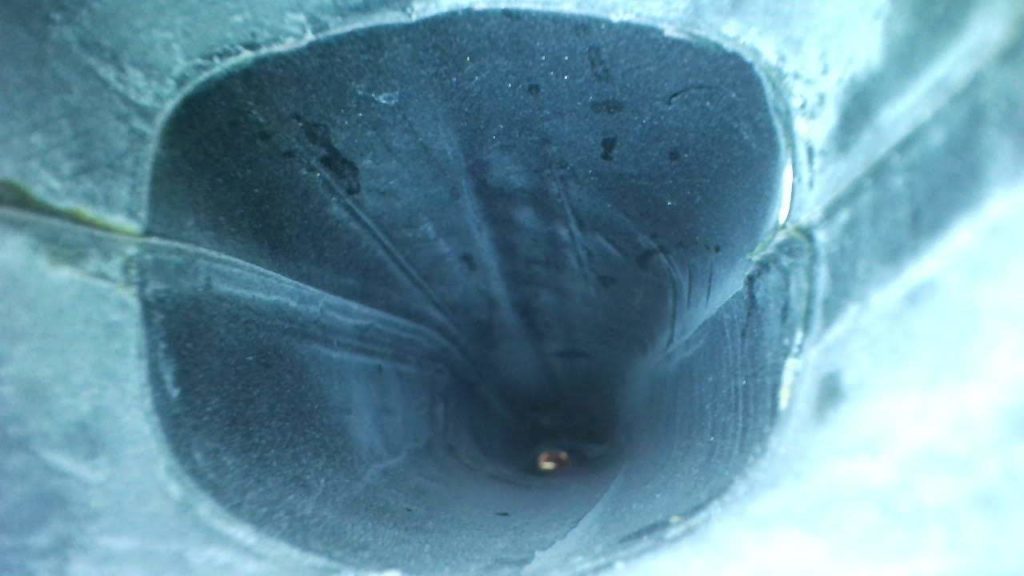Is that a crack or scratch? Is this safe to ride?
Using science and engineering knowledge we can peer below the surface and inspect your carbon fibre frame. We then compile an Alpha Report – a comprehensive report showing the structural condition of the frame and outlining any damage areas.
Using these NDT (Non Destructive Testing) methods we’re able to tell whether a carbon fibre frame, fork, or any other component has structural damage.
An Alpha Report costs $250 and this fee is credited back if you go ahead with the required repair work.
How we inspect carbon fibre
Tap Test and Visual Inspection
This is a simple test which you can perform yourself: Gently tap the suspect area with a metal object. An undamaged section will have a lovely tap sound whereas a damaged area will have a more hollow knock.
The first thing we do is a complete visual inspection and tap test any suspicious areas. A tap test isn’t comprehensive but can be a quick way to spot any potential problem spots.
Ultrasound

An ultrasonic pulse sent from the transducer will reflect on the back-side of the material or on an internal flaw in the laminate much like radar is used to find airplanes. By measuring the time taken for the ultrasonic waves to propagate and return to the transducer the thickness of the material and its internal structure can be analysed and any internal or invisible damage can be spotted.
Penetrant Dye

A special dye is a applied to the suspicious area and if any surface cracks are present the dye will be absorbed via capillary action. Excess dye is wiped off before a chemical developer is applied which pulls any dye from these cracks and exposes it to visual inspection.
Endoscopic Camera

Our tiny endoscopic camera is able to take high resolution 4K photos and video of the inside structure of a carbon frame. Seeing the inside of a carbon tube allows to see whether there is any internal damage or delamination of fibres.

